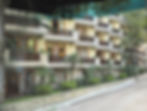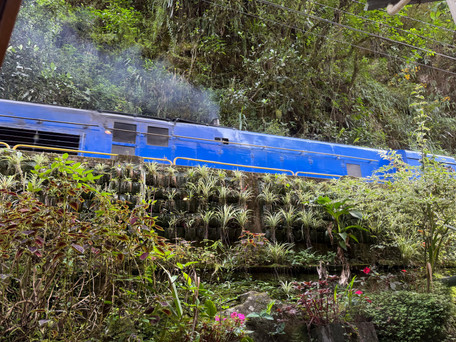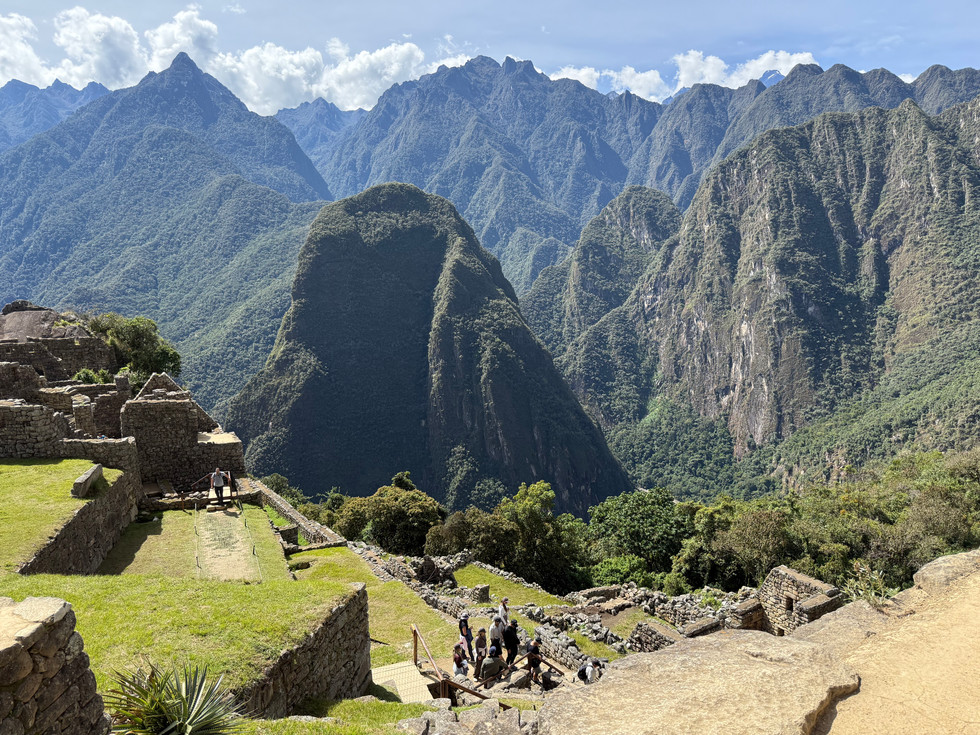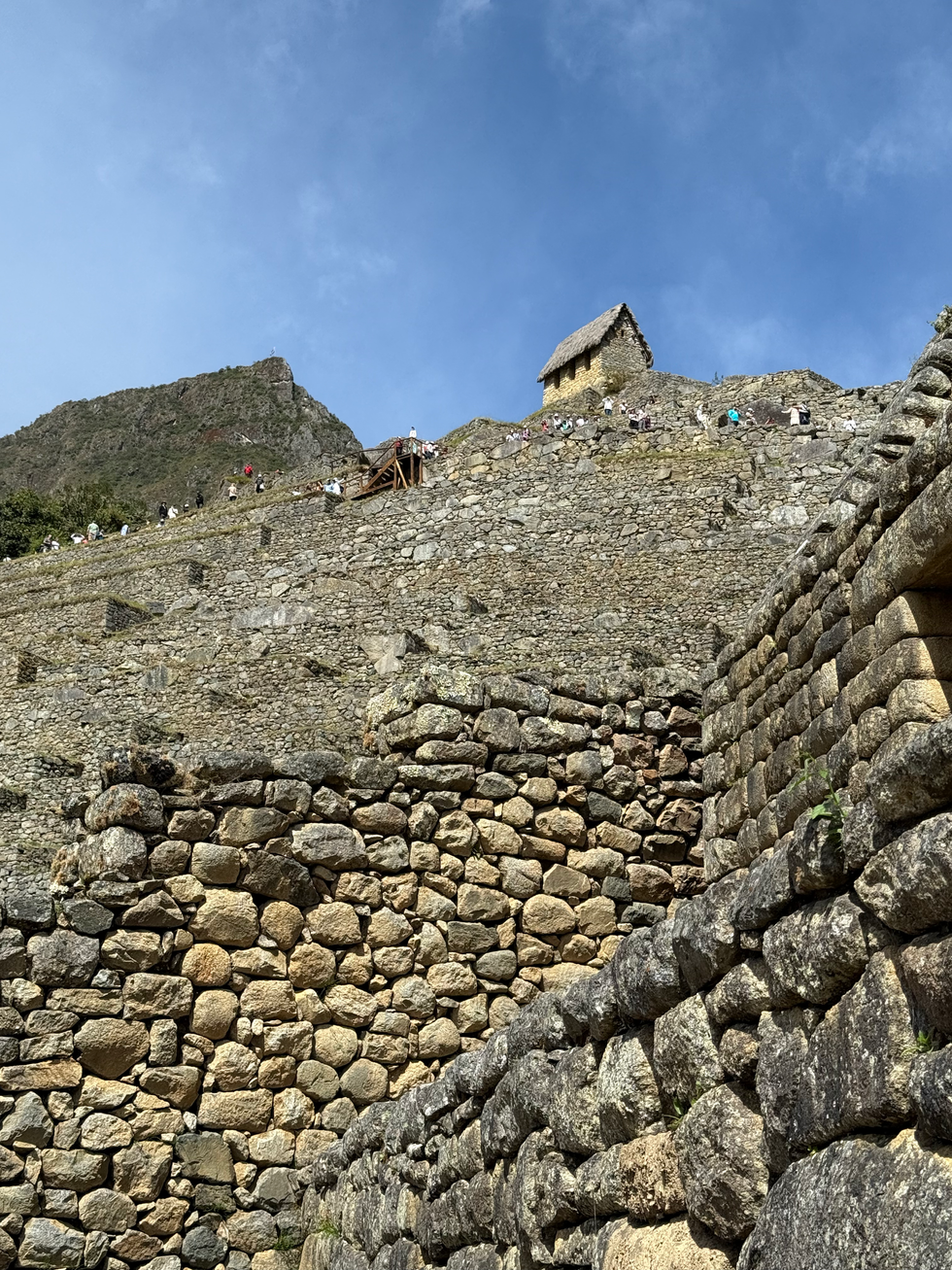Machu Picchu, Lost City of the Incas
- ellen
- Jul 3
- 4 min read

While we thoroughly enjoyed discovering different parts of Peru, the purpose of our trip was to see Machu Picchu. We went during the dry season so as to capitalize on the weather and we weren't disappointed! The weather can change minute-to-minute at Machu Picchu, but we were lucky to have beautiful, clear skies.
For most people the journey begins at Ollantaytambo where you board a train to Aguas Calientes, the village that supports Machu Picchu. You have a choice of trains that travel the 20 miles along the Urubamba River. We chose the Vistadome which provides beautiful views of the scenery during the journey of a little over an hour.




Aguas Calientes is essentially a bustling village of one long street that supports the 1.6 million visitors a year to Machu Picchu. The street is lined with souvenir shops, restaurants and hotels ranging from luxury to hostels. The train station is in the center of the village.


If you don't hike, you board the bus here for the 20-minute hairpin turn ride up the mountain. We saw a number of hikers both on the way up and down. The hike takes about 1.5 to 2 hours and includes a 1,000-foot elevation gain. It can be done with or without a guide.
In June of 2024 the Ministry of Culture established three main routes, or circuits, in Machu Picchu depending on visitors' interests and/or mobility level. Circuits one and two offer the iconic view while circuit three offers a similar view from a lower level. We chose Circuit 3 so Paul could avoid strenuous hiking up and down steps. It may not offer the iconic view, but it was stunning nevertheless. As far as I could tell, there's no bad option.
The first thing that hits you is how green it is, especially compared to Cusco and the Sacred Valley. We were there in June which is considered the dry season, but it was nevertheless stunning.

The Incans had no written language, so the current theories about the site itself and life there is the result of archeological research. No Europeans are thought to have visited the site from the late 16th century to the 19th century, hence the origin of the "lost city" nickname.
Radiocarbon research indicates that Machu Picchu was occupied from 1420 to 1532 when the Spaniards arrived. It's thought to have been built for the emperor Pachacuti and housed about 750 Incan royalty and support staff. It's believed that most of its residents died of smallpox prior to the arrival of the Spaniards.
Most of the farming was done thanks to hundreds of terraces. The terraces provided potatoes and corn and offered the additional benefit of protecting the site from erosion and landslides.


The Temple of the Sun is one of the most important structures in Machu Picchu. It was constructed to honor and worship the sun and to provide offerings. Only the high priest and other royalty were allowed inside. It is said that Pachacuti is buried there and ordered its construction for that purpose.

Llamas roam freely. As an animal lover, being able to feed one was one of the high points of the visit (evidently they love apples)!




Additional photos of this stunning place.
Our Hotel
As mentioned, accommodations in Aguas Calientes vary from basic to luxury. Being of a "certain age", we tend to opt for creature comforts, so we chose the Sumaq. It's a lovely hotel with a nice restaurant and excellent customer service. It's short walk from the train station, with some rooms overlooking the river. They will keep your luggage after checkout to be retrieved after your visit to Machu Pichu for the trip back to Ollantaytambo.

The bar, our room and the reception area.
See also our posts on Lima, Cusco and the Sacred Valley.
➜ Top Tips
This probably goes without saying, but wear sturdy, supportive and comfortable shoes.
Apply sunscreen. At 9,000 feet, the sun is very strong. Wear a hat.
There are no lavatory facilities once inside and only water and small snacks are allowed inside.
The dry season is April - November. While that offers the best chance of good weather, it's also the high season with more crowds and higher prices. The day we were there, however (a Saturday), it didn't feel crowded.
Reservations are mandatory and usually need to be made months in advance.
There is a restriction as to the size and weight of luggage on the train. Be sure you know what that is. Since we were returning to the same hotel in Cusco, we left our bags there and took only backpacks to Machu Picchu.
For the best views, try to sit on the left side of the train going to Machu Picchu and the right side returning.
With some research you can go completely independently and make your own reservations. We chose the less labor-intensive option of booking through a tour operator for the entire week. Inca Expert Travel made all our reservations and provided us with a detailed, step-by-step itinerary. We were thoroughly happy with them.
Even if you visit Machu Picchu independently, hiring a guide will enrich your visit.
Read also our daughter's guest post about her trip to Machu Picchu!






























